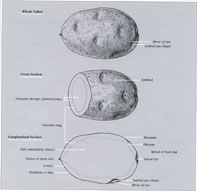Saturday, January 23, 2010
Winter
Saturday, January 2, 2010
Foods That Heal
With my sweet husband lying in bed with a cold today, I decided to take it upon myself to fill him with nourishing foods to ensure his health swiftly returns. I found a recipe for a garlic-y soup in my new favorite cookbook, The Art of Simple Food by Alice Waters.

THE HEALING QUALITIES OF GARLIC
Being an excellent source of vitamin B6, manganese, selenium, vitamin C, phosphorous, calcium, potassium, iron, and copper, the healing benefits of garlic are vastly beyond the scope of this entry. For now I’ll focus on the reason I decided to make this soup – Allicin. Chopping or crushing (or chewing) garlic stimulates the enzymatic process that converts the phytochemical alliin into allicin. Garlic’s allicin is known as “Russian penicillin” because of its antibacterial properties and has a long history of use as an infection fighter. It has shown to be effective against colds, flu, stomach viruses, and Candida yeast as well as powerful pathogenic microbes including tuberculosis and botulism (Murray, The Encyclopedia of Healing Foods). When I’m feeling under the weather I’ll often hand-stuff raw garlic into olives, make an avocado-garlic spread, or just eat a few cloves raw. The flavor is intense, but it sure beats a long, drawn out sickness.
Garlic then have power to save from death
Bear with it though it maketh unsavory breath,
And scorn not garlic like some that think
It only maketh men wink and drink and stink.
- Sir John Harrington, The Englishman’s Doctor
GARLIC BROTH WITH SAGE AND PARSLEY
This delicious and comforting soup is easy to make yourself even when you’re feeling under the weather. If someone is making it for you, ask him or her to include the variations for a heartier meal. This soup is best in early spring through early summer when immature green garlic has just been harvested, but you can make it any time of year using whatever garlic you have at home.
Peel and slice fresh garlic:
2 to 3 teaspoons sliced green garlic, or 1 to 2 sliced cloves per cup of broth.
Bring some light chicken broth to a boil with a few leaves of fresh sage. Once it comes to a boil use a skimmer to remove the sage leaves (if the sage cooks too long, the broth will become bitter and dark). Add the garlic to the broth along with salt to taste. Cook for about 5 minutes. Ladle the soup into a bowl, add a pinch of coarsely chopped parsley, and serve.
Variations:
For a more comforting soup, drizzle olive oil over a toasted slice of day-old bread, put it in the bowl, and ladle soup on top.
For a heartier soup, poach an egg in the broth and serve it on top of the bread.
Wednesday, February 18, 2009
Sweet Potato & Coconut Soup

I tasted this soup for the first time at Three Stone Hearth in Berkeley, California and found it divine! An avid soup avoider most of my life, I enthusiastically embraced my newfound love and immediately scoured the internet to find a recipe. After combining a few, this is what I came up with:

